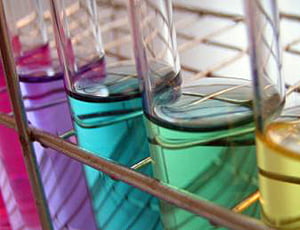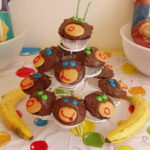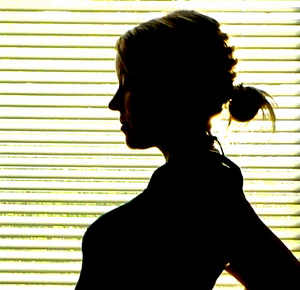Science doesn’t have to involve beakers of strange chemicals or dissecting unfortunate woodland creatures. Most young kids are naturally curious and eager to learn, and doing simple science projects with them is a great way to nurture that curiosity, build critical thinking skills, and have fun together.
Grow a sweet potato plant
What you’ll need (per scientist):
One sweet potato
Four toothpicks
A large jar, mug or glass, wide enough to hold the potato
Water
What to do:
Fill the jar about halfway with cool water. Stick the toothpicks into the potato, about halfway between the top and bottom. They should be fairly evenly spaced, roughly where 12, 3, 6 and 9 would be if the potato were a clock. Place the potato into the jar so that the bottom inch or two is covered in water. The toothpicks will hold the potato so that the bottom doesn’t rest on the bottom of the glass. Keep the bottom of the potato covered with water and let it get plenty of sun. Within a couple weeks, the eyes of the potato will begin to sprout and beautiful purple vines will grow.
Make butter
What you’ll need:
One pint of heavy cream
A large, wide-mouthed jar with a tight fitting lid
What to do:
Simply fill the jar with cream and shake until it solidifies. This is a fun activity to do with a group; the jar can be passed from person to person to shake while you tell stories, sing , or watch a movie. It doesn’t take long for the cream to become butter; when it does, remove the lump of butter and drain off the excess cream. A couple paper towels placed on top of the butter will help soak up the cream as well. You can add a bit of salt if you like, or add a few tablespoons of honey to make a sweet breakfast spread. Store the butter covered in the refrigerator.
*Note: Do not give honey to infants under one year, due to the risk of botulism.
Make rock candy
What you’ll need (per scientist)
A medium-sized saucepan
A large spoon for stirring
Measuring cups (for liquids and solids)
A pencil
One cup of water
Two cups of sugar
A heavy jar or glass
Clean string
Food coloring (optional)
What to do:
Boil the water. Add sugar, stirring constantly. Pour the solution into the jar. Add food coloring if you like. Tie the string to the middle of the pencil and cut the string so it will almost, but not quite, reach the bottom of the jar. Lay the pencil across the top of the glass so the string hangs down into the solution. Set the project aside to cool. Within a few hours, crystals will begin to form on the string. Leave the project for a week, or longer, to make candy.
*Note: This project requires an adult to boil, stir and pour the liquid. Boiling water can cause severe burns.
Do a weather study
What you’ll need:
A piece of posterboard or large sheet of paper
A ruler (optional)
Markers, pens, crayons
Tape
An outdoor thermometer
A rain gauge (optional)
What to do:
On the posterboard, make a month-long calendar. Use a ruler to help make the lines straight, if you like. (You can also make the calendar longer or shorter, depending on the attention span of your scientists. A simple week-long weather study is a good project for preschoolers and kindergartners.) Each day, note the temperature at as close to the same time as you can. Observe the weather conditions-sunny, cloudy, rainy, etc. If you have a rain gauge, note the amount of precipitation in the gauge. Record the information on the calendar each day. Very young kids can simply draw suns, raindrops or clouds on their calendars and at the end of the project, count how many days of each type of weather they recorded. Older kids can record high and low temperatures and different types of precipitation, and make graphs or charts reporting their data.
What freezes faster?
What you’ll need:
Ice cube trays
A freezer or below-freezing day
Water
Milk, juice, soda or another safe liquid
A watch or clock
What you’ll do:
Simply fill half the tray with water and the other half with your other liquid. Place the tray in the freezer or outside on a very cold day. Check the trays every half hour until the liquid begins to freeze. Try this project using half hot and half cold water, or different combinations of liquids. Unless the liquids are tested to be at the exact same temperature at the beginning of the experiment, this isn’t a science-fair worthy project, but it’s fun for kids anyway.
Grow some mold
(OK, this is pretty gross, but most kids like gross!)
What you’ll need:
Different foods like bread, cheese, fruits and vegetables (try using different types of the same food and see what happens)
One small plastic dish for each food (butter tubs and lids are good)
What you’ll do:
Set each piece of food on a plastic dish. Set the dishes someplace they won’t be disturbed, and warn everyone not to throw them away! Check the food daily and note which things begin to mold first. Ambitious scientists can note the variations of mold-color, density, etc. and what other changes the food goes through. Try using two of each kind of food and placing one dish in a dry place like a hall closet, and one in a humid place like a bathroom, or place one inside and one outside.
Just have fun
Plant a garden, bake some cookies, watch the moon-it’s all fun, and it’s all science.





